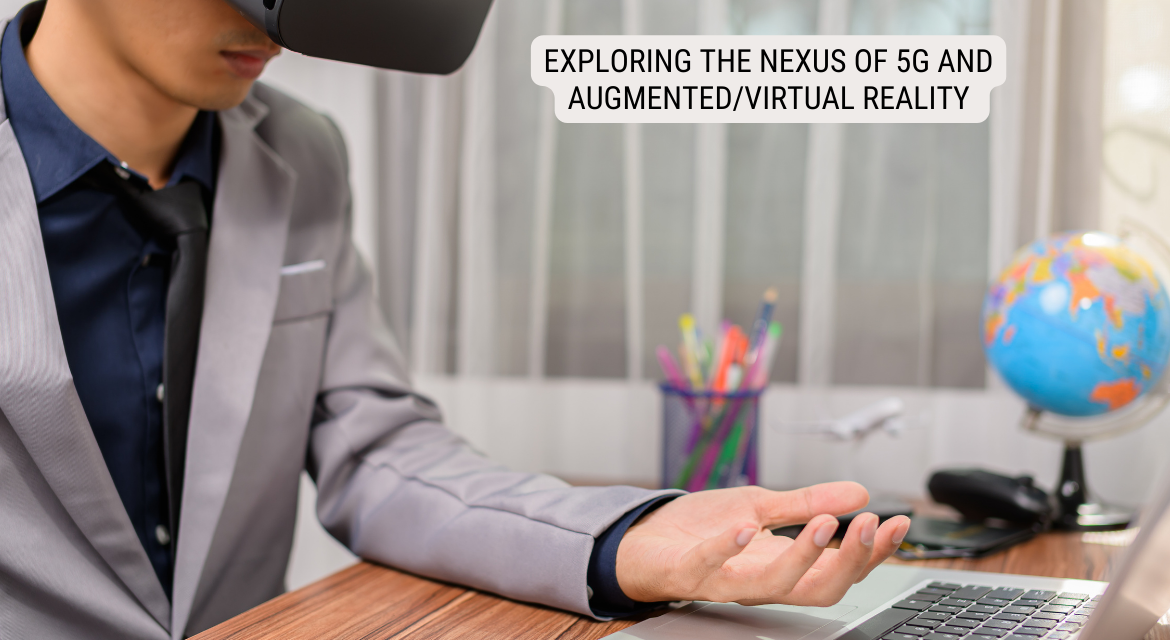Integrating 5G technology into Virtual Reality (VR) and Augmented Reality (AR) is expected to revolutionise how users experience digital content. With the advancements in global 5G network rollouts. The improved connectivity and speed it provides offer a vast potential for a variety of AR and VR applications. This article explores the effect of combining 5G and AR/VR, examining the numerous industries and innovative experiences that this collaboration will bring.
5G technology High-Speed, Low-Latency Experiences:
5G technology offers the fastest data speeds and minimum latency, catalysing a surge in AR/VR applications. The low-delay communication between devices and servers, enabled by near-real-time data transmission, is critical for creating smooth performance without lags that are required when simulating AR/VR environments.
Revolutionizing Gaming and Entertainment:
AR/VR technology has become a new territory where 5G technology can take an experience to a new level, creating uncharted areas. Gamers no longer have to carry cumbersome hardware with them, as even complex simulations can be rendered in real-time if the processing power is offloaded to the cloud. The content of streaming AR becomes much smoother, thus allowing for a smooth and interactive experience.
Enhanced Education and Training:
The 5G technology’s low latency and high bandwidth are opening up new possibilities for education and training in 3D/VR/AR/MR technologies. With virtual classrooms, students can interact with each other in real-time, while professionals can receive simulated training using real-time VR. As a result, this technology has the potential to democratise quality education and training globally.
Revitalising Healthcare with Remote Assistance:
In healthcare, the mix of 5G and AR/VR enables better patient care. Surgeons could assist remotely in an AR-guided operation, and medical personnel could use VR to teach life-like scenarios. Remote patient monitoring becomes better with embedded information overlays that make diagnosing and treating easier.
Augmented Retail Experiences:
The retail industry is in the middle of reconstruction. So 5G and AR can bring the retail experience to the next level. Consumers can play AR applications as they see the given products in their own private spaces and then make a purchase. The virtual try-on method used for clothing and accessories is developing and is therefore improving the online shopping experience.
Smart Cities and Navigation:
5G-enhanced AR is part of the intelligent city building in the world. AR overlays of relevant points of interest, current public transport information, and navigation guidance will be superimposed. This increases the convenience of residents and also boosts more effective urban planning and domination.
Challenges and Considerations:
Yet, despite all of the promising outcomes, the harmonisation of 5G and AR/VR technologies also brings forth their own challenges. Privacy and security issues will be among the major concerns, as well as requirements for a robust infrastructure. It is necessary to consider these problems because the right use of these technologies ought to be guided.
Conclusion:
5G combines the 5th Generation Wireless Technology with Augmented Reality and Virtual Reality. This brings a significant change from the usual way we understand and perceive digital information. The synergy of these technologies is in motion, and it is paving the way for immersive experiences that can transform industries like entertainment, education, healthcare, and smart cities. The intersection of 5G and AR/VR is a crucial development that should not be taken for granted, as it presents both challenges and opportunities. Addressing these challenges will help in the harmonious exploitation of the full potential of these technologies for human advancement.





